The unit I painted in Part 4 completed the British force up to 600 points and so the project is nearly ready for the first small scale game. This article is a quick run through of the units that comprise the British army, and I’ll also make a few ill-advised crystal ball style predictions about how the force might play on the table.
The British army is taken from the 1918 army list and represents a standard British Expeditionary Force Battalion (as opposed to a lower-grade Territorial Battalion) from Kitchener’s “New Army”. Designed to replace the original BEF of 1914 the New Army was initially comprised soley of volunteers, but had been forced to turn to conscription by 1916. By 1918 Kitchener was dead and the New Army was not so “new” any more. Having learned the art of modern warfare, particularly at the Somme, the BEF could now be considered equal to their German opposition.
The same rules for the 1918 BEF Battalion apply as for the German Angriffbattailon: “Core” Infantry units, the number of which defines the availability of more specialised “Support” units.
Here’s the list for my 600 point force:
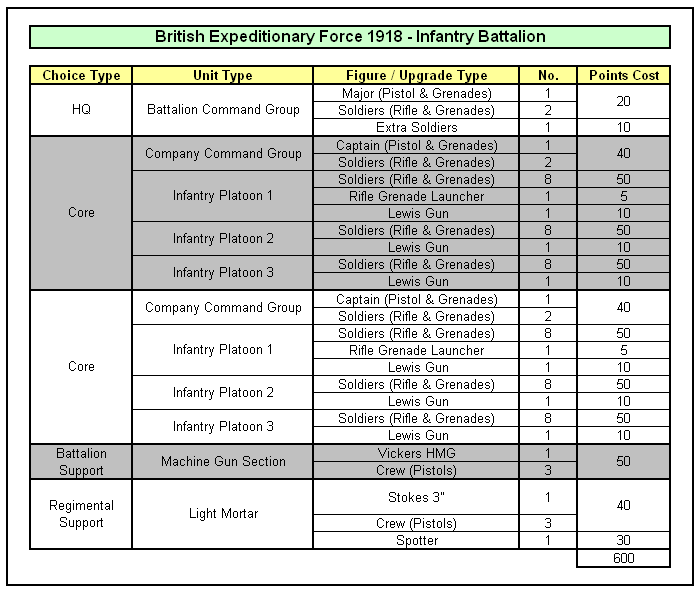
Unlike the German list the British force isn’t quite a “barebones” list as British companies have the option to take as few as 2 platoons per company. The company I order the figures from (Northstar) do deals on “Company packs” that include enough for 3 platoons and I figured that for our first few games it would be a good idea to at least start with roughly equal numbers of core units.
As usual, photo’s and comments for each unit follow:
Battalion HQ
The mandatory command unit. Not much going on here. For a small game I decide to limit the commander to a Major and not a full Colonel. Initially I had enough spare points to put two extra soldiers in the command group to bring the HQ up to scoring strength, but later events meant I only had enough for one.
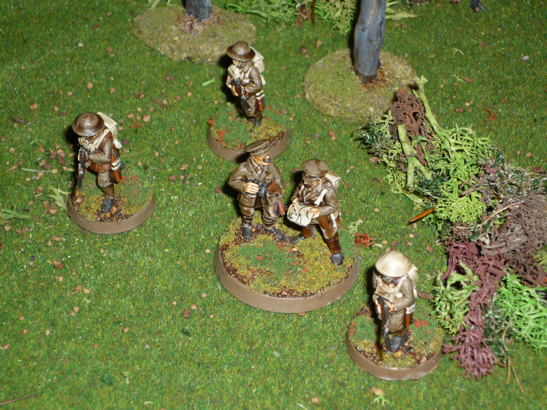
Battalion HQ
Infantry Company
The BEF Battalion’s core unit. Each company (and the minimum number you can field is 2) consists of three eight-man platoons and a three-man command group. Each platoon has a single Lewis Gun LMG and the rest are equipped with rifles and grenades.
When the models for second company arrived it seemed Northstar had swapped out a blister of infantry for a blister of bombers, mildly irritating as they hadn’t asked but they do look great so I didnt argue. There were two rifle grenade launchers in the pack, which at 5 points each squeezed the second extra HQ figure off the army list.
Compared with their German opponents the British Infantry have smaller platoon sizes, but higher initiative meaning they strike first in melee. The Brits carry the Lewis Gun instead of the MG08/15, which gives them the advantage of greater firepower on the move, but less in a static firefight.
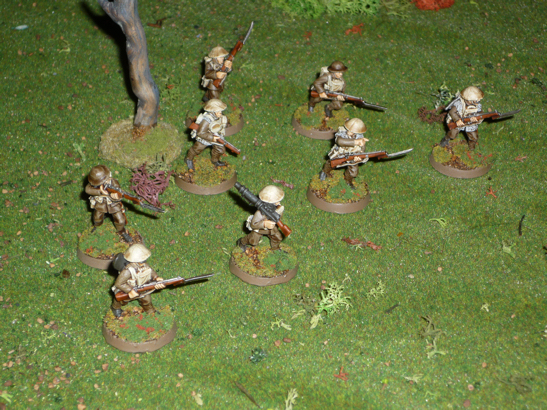
Infantry Platoon with Lewis Gun
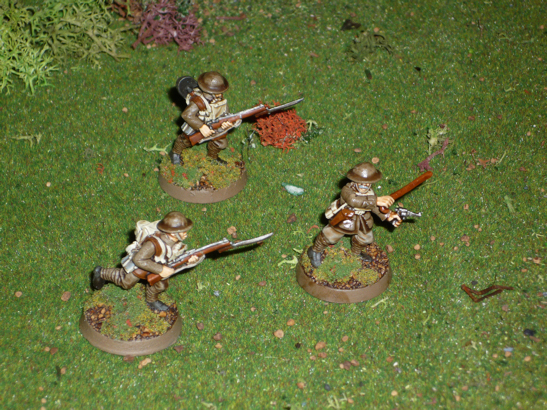
Infantry Company HQ (One of my favourite models)
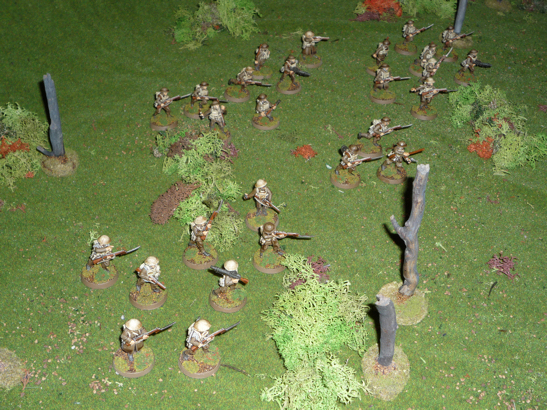
Infantry Company
Machine Gun Section
The Kings of the battlefield. The British field the Vickers Heavy Machine Gun, a weapon still in use during WWII. The rules for a HMGs in the Great War give them two kinds of attacks: “sustained” fire focusing on a single unit, and “sweeping” fire for pinning down several units at a time.
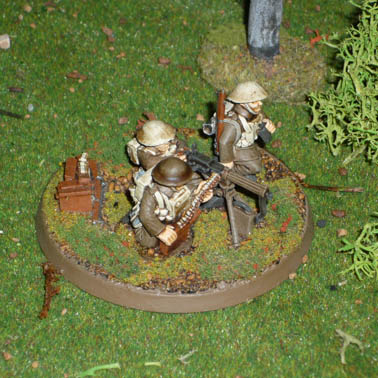
Vickers HMG Section
Light Mortar Section
The British Light Mortar at this time is the 3″ Stokes Mortar. This unit uses indirect fire and the large blast marker. The Brits have the option of assigning a spotter to any mortar or field gun and I’ve chosen to do so. The spotter can provide line of sight to the mortar so long as it remains with 12″ of it, keeping the mortar safe and out of sight. This brings the Mortar Section up to a cost of 70 points and I did question the decision a bit. It seemed like a lot of points to put into one support option with armies this small.
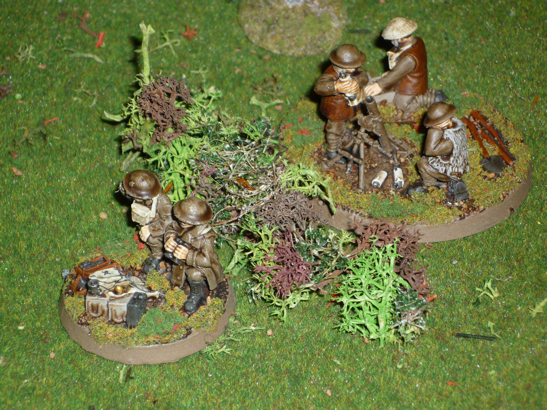
3″ Stokes Mortar with Spotter
The assembled Battalion is shown below. The British player will have fewer boots on the ground, but much stronger support options. Its taken me a while to get round to writing this article so I have actually played a game now, but before that I was predicting that the British player would be likely to play defensively.
So at this point I now have enough painted models to play a small game. That means I’m now looking to put together enough terrain to fill a 4’x4′ table.